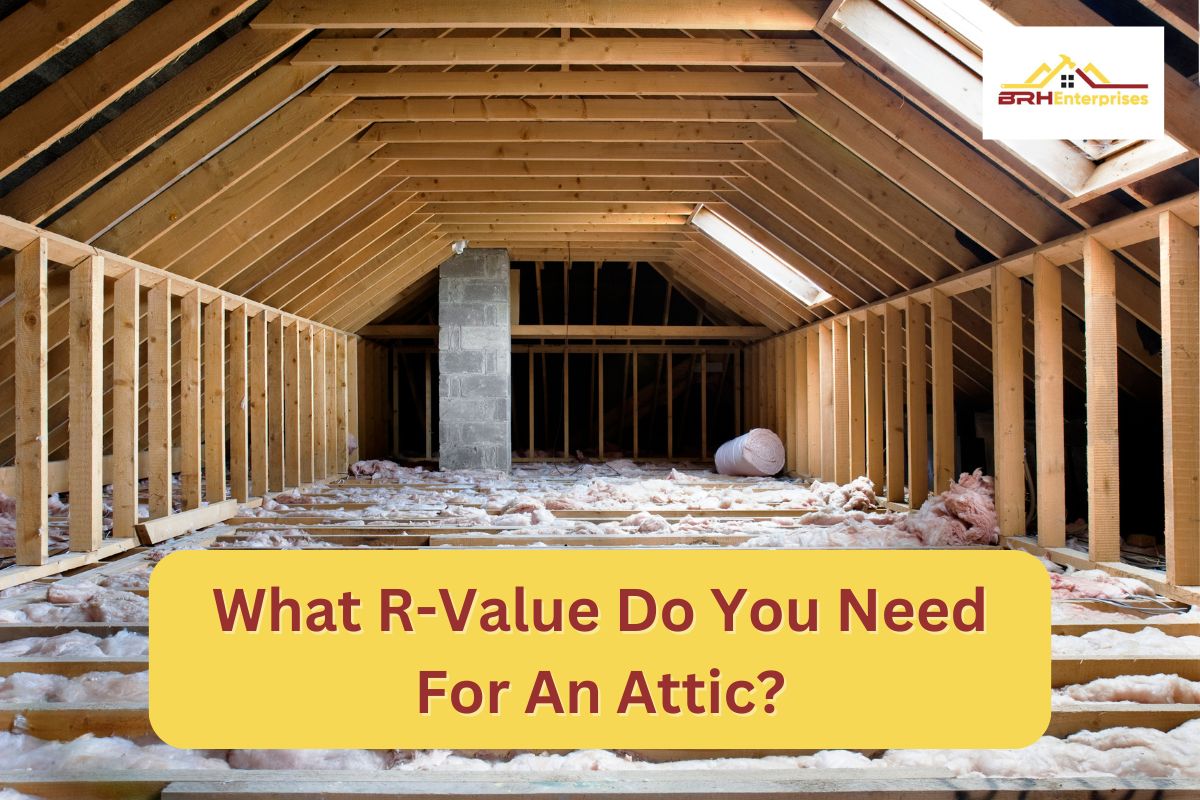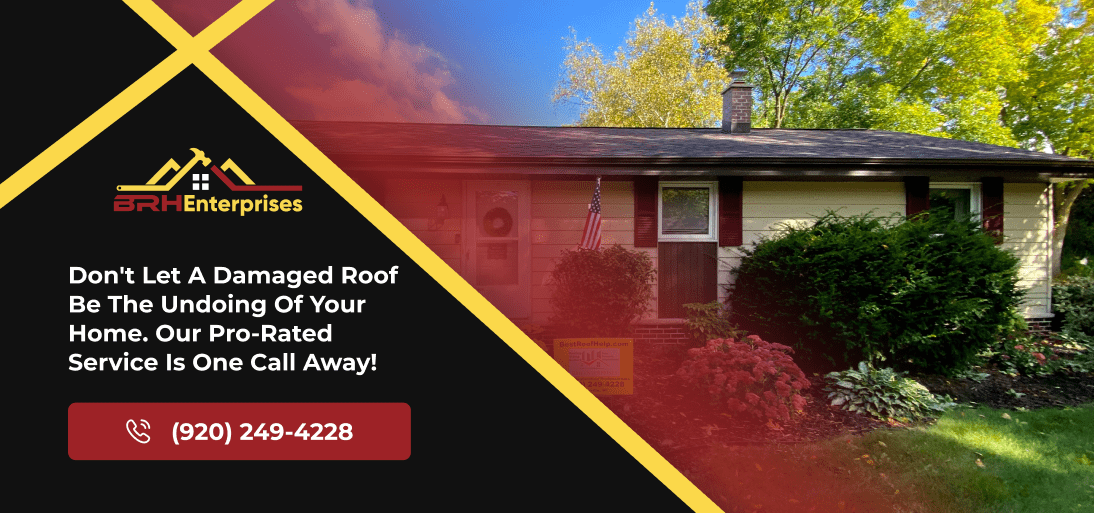What R-Value Do You Need For An Attic?
Estimated Reading Time : 5 Min.

Quality attic insulation is one of the most valuable investments you can make in maintaining a comfortable home and managing energy costs. However, what many don’t know is that behind this important home improvement lies a key concept: the R-value. This guide will explore what the R-value means for attic insulation, why it’s important, and how to determine the appropriate R-value for your specific needs.
What Exactly is R-Value and Why Does it Matter for Your Attic?
R-value is a measure of thermal resistance that indicates how well the specific material can resist heat flow.
In simpler terms, it tells us how effective insulation is at keeping heat where we want it – inside during winter and outside during summer. The higher the R-value, the better the insulation performs.
For attics, understanding the R-value is crucial because this space acts as a barrier between your living areas and the outside environment. Proper insulation with an appropriate R-value for your needs can significantly impact your home’s energy efficiency, comfort levels, and even the longevity of your heating and cooling systems.
How Does Attic Insulation Work?

To truly appreciate the importance of R-value, it’s worth understanding how attic insulation works.
Heat naturally travels from warmer to cooler areas through three main mechanisms:
Conduction: In conduction, heat transfers through direct contact between materials. Insulation slows this process by trapping tiny pockets of air within its structure.
Convection: When the heat moves through liquids or gasses, it is known as convection. Insulation reduces convection by minimizing the movement of air within the attic space.
Radiation: This is heat transfer through electromagnetic waves. Some types of insulation, particularly those with reflective surfaces, can help reflect radiant heat.
What Is The Long-Term Value Of Appropriate Attic Insulation?
Here are some of the long-term impacts that having effective attic insulation with the right R-value can have on your home.
#1 Energy Efficiency
Proper insulation can reduce your cooling and heating costs by up to 15% or more, leading to significant savings on your energy bills over time.
#2 Improved Comfort
With the right R-value, your attic insulation helps maintain consistent temperatures, making your living space more comfortable year-round.
#3 Environmental Impact
By reducing your energy consumption, you’re also lowering your carbon footprint and doing your part to protect the environment
#4 Extended HVAC Lifespan
When the attic is properly insulated, your heating and cooling systems won’t have to work as hard, potentially extending their operational life.
#5 Moisture Control
Good insulation can help prevent condensation in your attic, reducing the risk of mold and other structural damage.
#6 Noise Reduction
An added bonus of proper attic insulation is its ability to dampen outside noise, creating a quieter, more peaceful home environment.
Also Read: All You Need To Know About Roof Insulation And The Top Products In Just 10 Minutes
How To Decide The Right R-Value For Your Attic In Wisconsin
The recommended R-value for attic insulation varies depending on where you live. The U.S. Department of Energy and Energy Star have divided the country into climate zones, each with its own insulation recommendations.
Here’s a brief overview of what type of R-value for attic insulation is appropriate for your area:
| Climate Zones | About The Zone | Recommended R-value |
| Zone 1 | This zone includes areas with very hot summers and mild winters. | R25 to R30 |
| Zone 2 | In this zone, the weather includes warm summers and mild winters. | R38 to R49 |
| Zone 3 | Zone 3 features mixed weather conditions, combining warm and mild temperatures. | R38 to R49 |
| Zone 4 | This zone has a moderate climate characterized by warm summers and cool winters. | R49 to R60 |
| Zone 5 to 8 | These zones are defined by cold winters, requiring significant heating throughout the year. | R49 to R60 |
What Is The General R-Value of Common Insulation Materials?
When it comes to achieving the right R-value for attic insulation, you have several options. Each type of insulation material has its own R-value per inch of thickness. Here’s a valuable comparison to help you make an informed decision:
👉 Fiberglass: This common and cost-effective option has an R-value of about R2.2 to R4.3 per inch. It’s available in batts or as loose fill, making it versatile for different attic spaces.
👉Mineral Wool: With an R-value of 3.0 to 3.3 per inch, mineral wool offers slightly better insulation than fiberglass. It’s also naturally fire-resistant and water-repellent.
👉 Spray Foam: This high-performance option boasts an R-value of 3.5 to 6.5 per inch, depending on whether it’s open-cell or closed-cell. Although more expensive, it provides excellent air sealing and insulation.
👉 Cellulose: Made from recycled paper products, cellulose has an R-value of 3.2 to 3.8 per inch. It’s an eco-friendly choice that can be blown into an attic space, making it great for retrofitting existing homes.
When choosing your insulation you should also think about the cost, the ease of installation, and any specific needs your home might have. Sometimes, a combination of materials might be the most effective solution to achieve the recommended R-value for your attic.
How To Evaluate Your Existing Insulation and Calculate Additional Needs
Before you can determine what R-value you need for your attic, it’s important to assess your current insulation situation. Here’s a step-by-step guide to help you evaluate your attic’s insulation needs:
👉 Safety First: Ensure you have proper lighting and a sturdy walking surface in your attic. Wear a protective dust mask and gloves just in case you’re dealing with hazardous materials.
👉 Measure Existing Insulation: Use a tape measure to check the depth of your existing insulation. You need to multiply this depth by the R-value per inch of your insulation type to get your current R-value.
👉 Identify Gaps: Look for areas where insulation is missing or compressed, as these can significantly reduce overall effectiveness.
👉 Calculate Additional Needs: Subtract your current R-value from the recommended R-value for your climate zone. This will tell you how much additional insulation you need.
Remember, it’s not just about reaching a certain R-value. Proper installation is equally important. Gaps, compression, or moisture can all reduce the effectiveness of your insulation, regardless of its R-value. When in doubt, it’s often worth consulting with a professional to ensure you’re achieving the best possible insulation for your attic.
Call BRH Enterprises For a Professional Roof Inspection In Mayville, WI
If you feel a decrease in the comfort levels of your home, or see an increase in energy bills, your insulation might be to blame. At BRH Enterprises, we understand the importance of thorough inspections to catch even the most minor problems. We have a team of professionals who have experience handling the unique challenges that the buildings in our local area face.
If you are looking for a thorough roof inspection in Mayville, WI, then we are here to assist you! Trust us for your roofing project and we will make sure that you get valuable results for your investment. To get a custom quote, feel free to call us today at (920) 249-4228. Our experts are waiting to help you!


